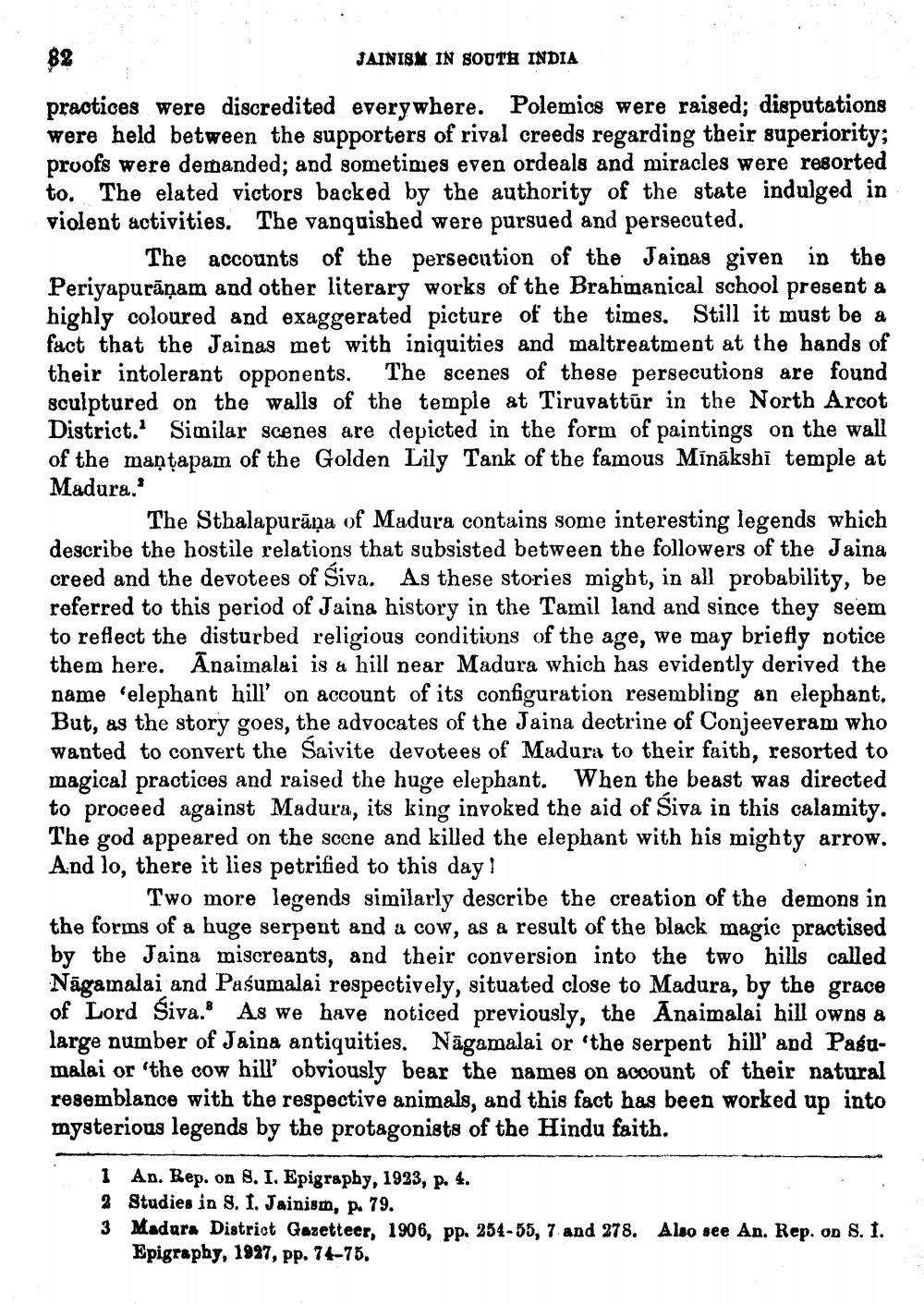________________
82
JAINISM IN SOUTH INDIA
practices were discredited everywhere. Polemics were raised; disputations were held between the supporters of rival creeds regarding their superiority; proofs were demanded; and sometimes even ordeals and miracles were resorted to. The elated victors backed by the authority of the state indulged in violent activities. The vanquished were pursued and persecuted.
The accounts of the persecution of the Jainas given in the Periyapurāņam and other literary works of the Brahmanical school present a highly coloured and exaggerated picture of the times. Still it must be a fact that the Jainas met with iniquities and maltreatment at the hands of their intolerant opponents. The scenes of these persecutions are found sculptured on the walls of the temple at Tiruvattūr in the North Arcot District. Similar scenes are depicted in the form of paintings on the wall of the mantapam of the Golden Lily Tank of the famous Minākshi temple at Madura.'
The Sthalapurāņa of Madura contains some interesting legends which describe the hostile relations that subsisted between the followers of the Jaina creed and the devotees of Siva. As these stories might, in all probability, be referred to this period of Jaina history in the Tamil land and since they seem to reflect the disturbed religious conditions of the age, we may briefly notice them here. Anaimalai is a hill near Madura which has evidently derived the name "elephant hill' on account of its configuration resembling an elephant. But, as the story goes, the advocates of the Jaina dectrine of Conjeeveram who wanted to convert the Saivite devotees of Madura to their faith, resorted to magical practices and raised the huge elephant. When the beast was directed to proceed against Madura, its king invoked the aid of Siva in this calamity. The god appeared on the scene and killed the elephant with his mighty arrow. And lo, there it lies petrified to this day!
Two more legends similarly describe the creation of the demons in the forms of a huge serpent and a cow, as a result of the black magic practised by the Jaina miscreants, and their conversion into the two hills called Nāgamalai and Pasumalai respectively, situated close to Madura, by the grace of Lord Siva. As we have noticed previously, the Anaimalai hill owns a large number of Jaina antiquities. Nāgamalai or 'the serpent hill' and Pasumalai or 'the cow hill' obviously bear the names on account of their natural resemblance with the respective animals, and this fact has been worked up into mysterious legends by the protagonists of the Hindu faith.
1 An. Rep. on 8. I. Epigraphy, 1923, p. 4. 2 Studies in S. 1. Jainism, p. 79. 3 Madara District Gazetteer, 1906, pp. 254-55, 7 and 278. Also see An. Rep. on 8. 1.
Epigraphy, 1997, pp. 74-75.




